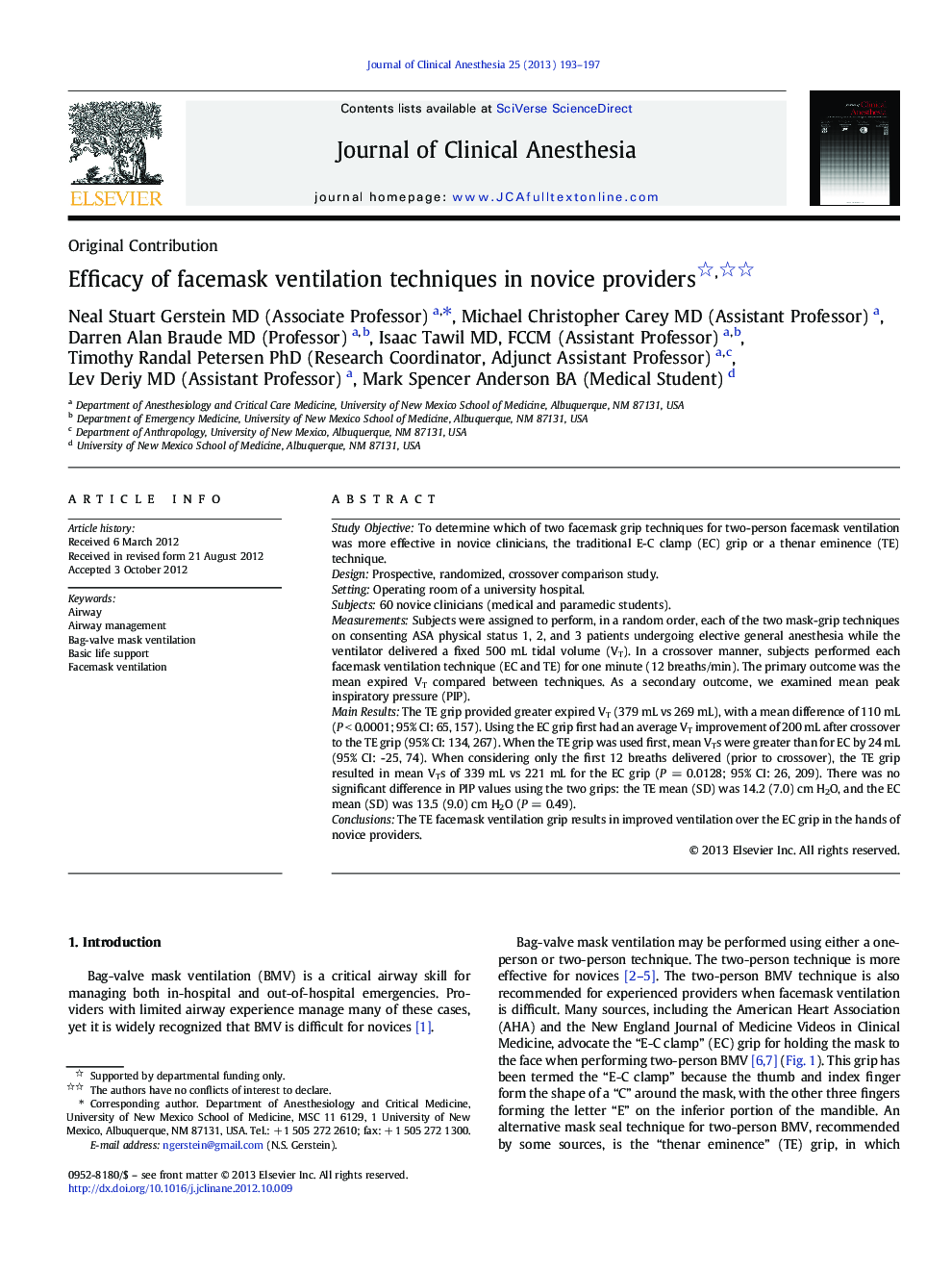| Article ID | Journal | Published Year | Pages | File Type |
|---|---|---|---|---|
| 2762880 | Journal of Clinical Anesthesia | 2013 | 5 Pages |
Study ObjectiveTo determine which of two facemask grip techniques for two-person facemask ventilation was more effective in novice clinicians, the traditional E-C clamp (EC) grip or a thenar eminence (TE) technique.DesignProspective, randomized, crossover comparison study.SettingOperating room of a university hospital.Subjects60 novice clinicians (medical and paramedic students).MeasurementsSubjects were assigned to perform, in a random order, each of the two mask-grip techniques on consenting ASA physical status 1, 2, and 3 patients undergoing elective general anesthesia while the ventilator delivered a fixed 500 mL tidal volume (VT). In a crossover manner, subjects performed each facemask ventilation technique (EC and TE) for one minute (12 breaths/min). The primary outcome was the mean expired VT compared between techniques. As a secondary outcome, we examined mean peak inspiratory pressure (PIP).Main ResultsThe TE grip provided greater expired VT (379 mL vs 269 mL), with a mean difference of 110 mL (P < 0.0001; 95% CI: 65, 157). Using the EC grip first had an average VT improvement of 200 mL after crossover to the TE grip (95% CI: 134, 267). When the TE grip was used first, mean VTs were greater than for EC by 24 mL (95% CI: -25, 74). When considering only the first 12 breaths delivered (prior to crossover), the TE grip resulted in mean VTs of 339 mL vs 221 mL for the EC grip (P = 0.0128; 95% CI: 26, 209). There was no significant difference in PIP values using the two grips: the TE mean (SD) was 14.2 (7.0) cm H2O, and the EC mean (SD) was 13.5 (9.0) cm H2O (P = 0.49).ConclusionsThe TE facemask ventilation grip results in improved ventilation over the EC grip in the hands of novice providers.
